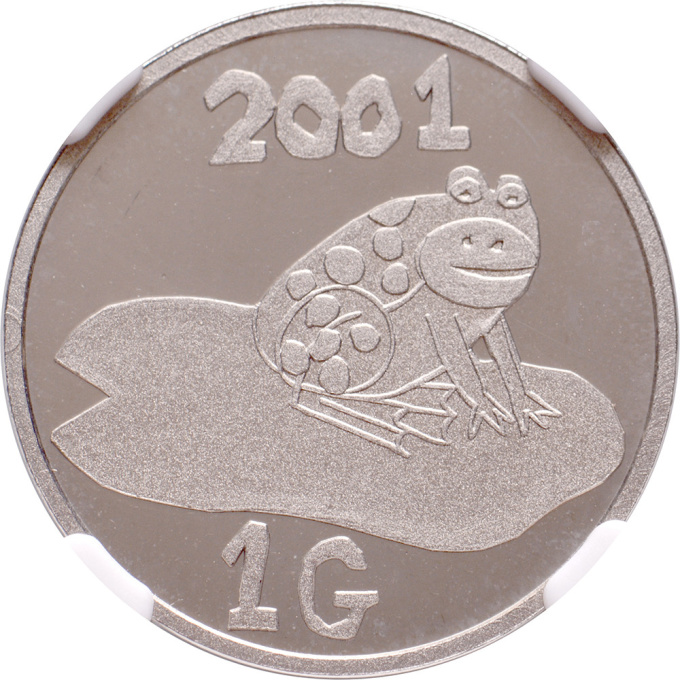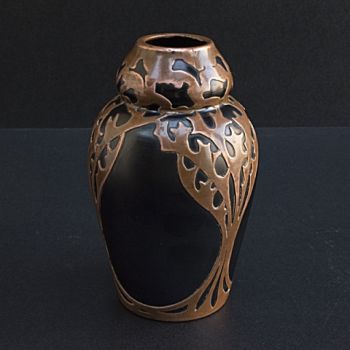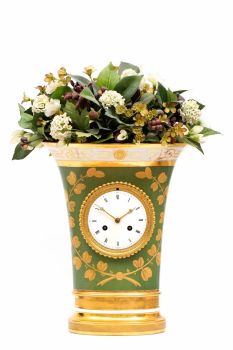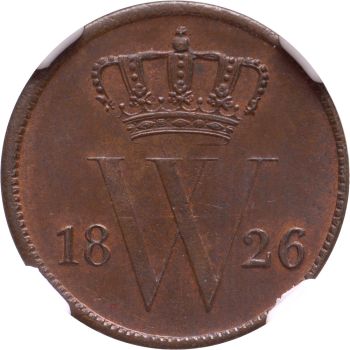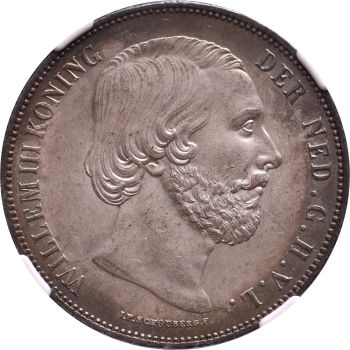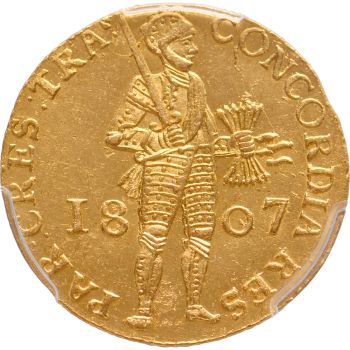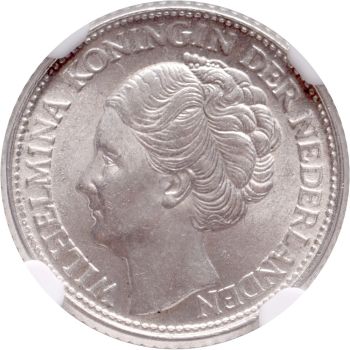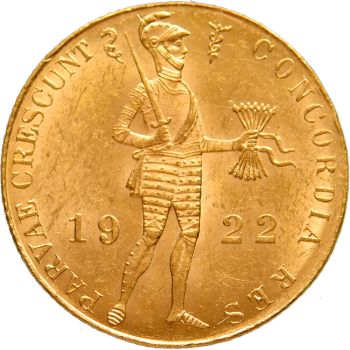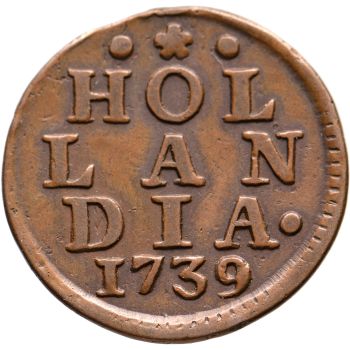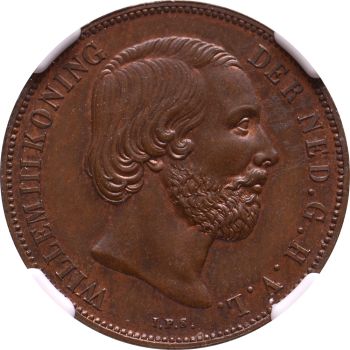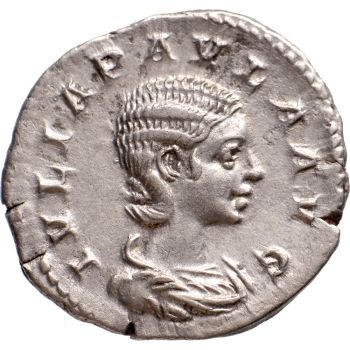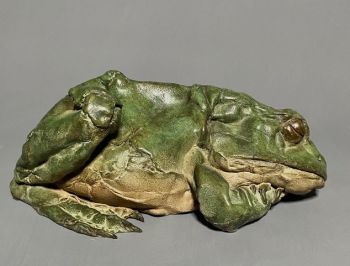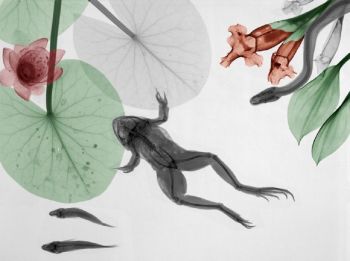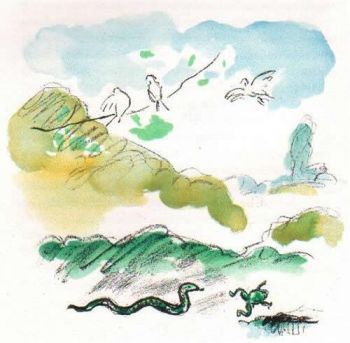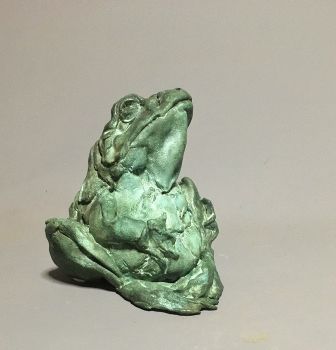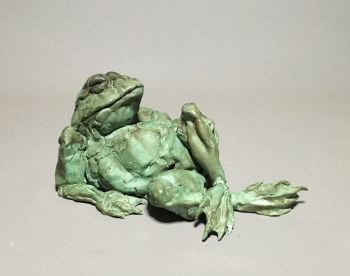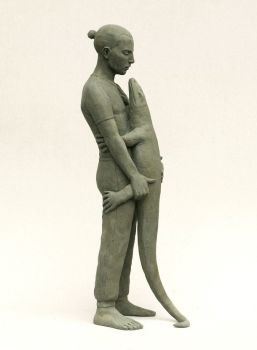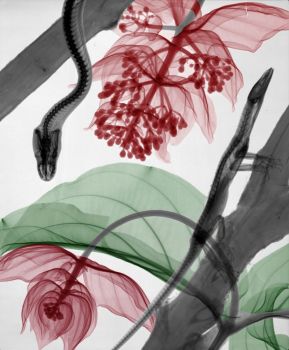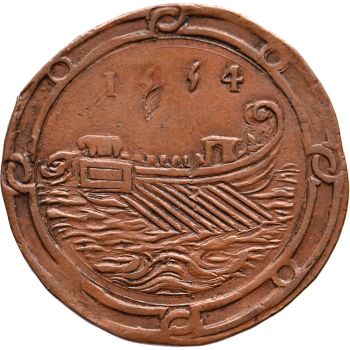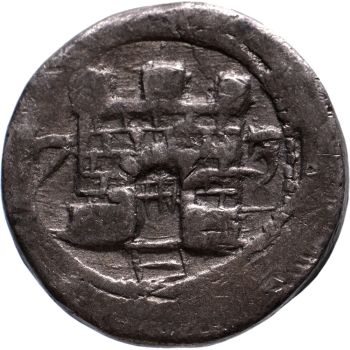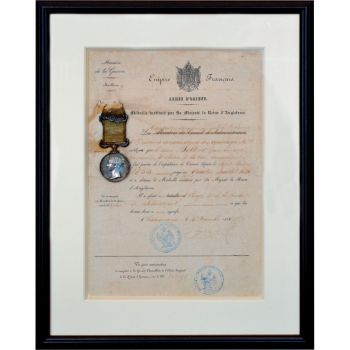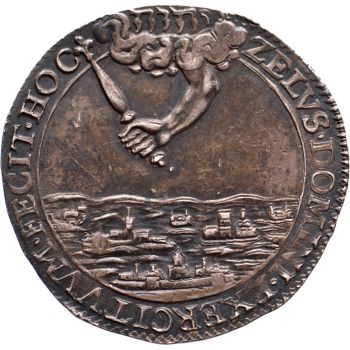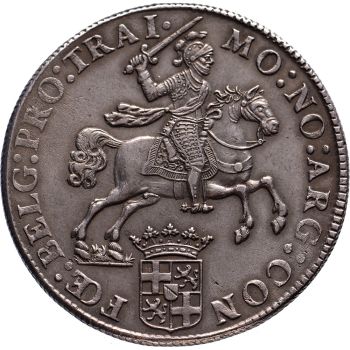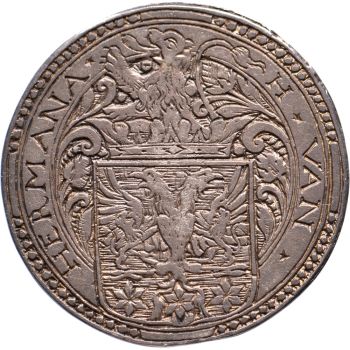1 gulden NGC PF 68 ULTRA CAMEO ONE-SIDED TRIAL DESIGN 2001
Artista Sconosciuto
€ 5.350
Jongeling Numismatics & Ancient Art
- A proposito di opere d'arteObverse: frog on lily pad, 2001 above, 1G underneath
Reverse: blank
OF THE HIGHEST RARITY
With the transition to the euro, and therefore the retirement of the guilder in 2001, the Ministry of Finance organised a design competition among 3,000 primary schools in 2000 to create a design for the last guilder. Ten designs were chosen from all entries and were submitted to the Mint Advisory Committee. The Minister of Finance, Wouter Bos, would ultimately choose the design of the student Tim van Melis. 1 million circulation coins of this design were produced.
Of the nine other designs, a very small number of trial strikes were made in proof quality to be shown to the Mint Advisory Committee and ultimately the Minister of Finance. One of the ten designs that was ultimately not chosen was the design by Ariët Barhorst with a frog sitting on a lily pad. A typical Dutch picture.
While most of the designs have been destroyed, this one has been preserved and is the only known specimen on the market. - A proposito di opere artista
Può succedere che un artista o un creatore sia sconosciuto.
Alcune opere non sono determinate da chi sono state realizzate o sono state realizzate da (un gruppo di) artigiani. Esempi sono statue dell'antichità, mobili, specchi o firme non chiare o leggibili ma anche alcune opere non sono affatto firmate.
Inoltre puoi trovare la seguente descrizione:
•"Attribuito a …." A loro avviso probabilmente opera dell'artista, almeno in parte
•“Studio di ….” o “Officina di” A loro avviso un'opera eseguita nello studio o nella bottega dell'artista, eventualmente sotto la sua supervisione
•“Cerchio di…” A loro avviso un'opera del periodo dell'artista che mostra la sua influenza, strettamente legata all'artista ma non necessariamente al suo allievo
•"Stile di..." o "Seguace di..." A loro avviso un'opera eseguita nello stile dell'artista ma non necessariamente da un allievo; può essere contemporaneo o quasi contemporaneo
•“Modalità di…” A loro avviso un'opera nello stile dell'artista ma di epoca successiva
•"Dopo …." A loro avviso una copia (di qualsiasi data) di un'opera dell'artista
•“Firmato…”, “Datato…” o “Iscritto” A loro avviso l'opera è stata firmata/datata/inscritta dall'artista. L'aggiunta di un punto interrogativo indica un elemento di dubbio
•"Con firma....", "Con data...", "Con iscrizione..." o “Riporta firma/data/iscrizione” a loro avviso la firma/data/iscrizione è stata aggiunta da qualcuno diverso dall'artista
Sei interessato ad acquistare questa opera d'arte?
Artwork details
Related artworks
Artista Sconosciuto
Antica icona russa in legno: Arcangelo Gabrieleearly 17th
Prezzo su richiestaKunsthandel H.W.C. Dullaert Icons
1 - 4 / 12- 1 - 4 / 24
- 1 - 4 / 24
- 1 - 4 / 12

